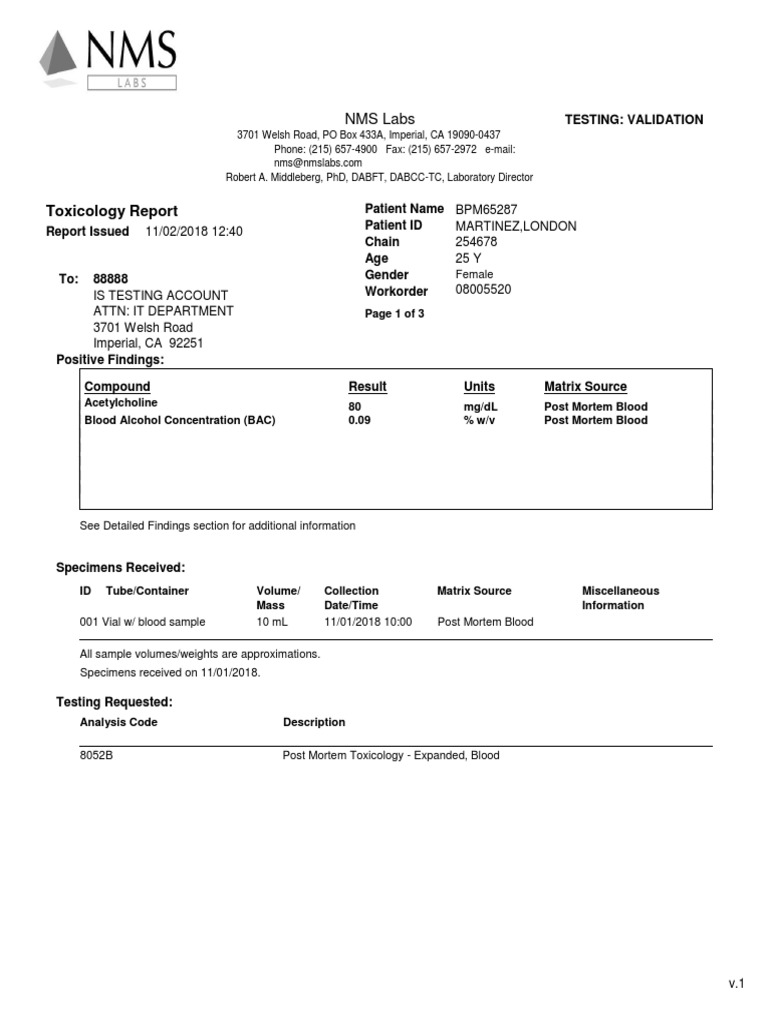An autopsy, a meticulous post-mortem examination, often necessitates a toxicology report to ascertain the presence and concentration of various substances within the deceased’s system. These substances, ranging from therapeutic medications to illicit drugs and environmental toxins, can shed light on the cause and manner of death. But how long does this crucial piece of the puzzle – the toxicology report – actually take?
The timeframe for receiving an autopsy toxicology report isn’t a fixed entity. It’s a variable dance influenced by a constellation of factors. It’s not as simple as ordering a test and getting a result in a few days. Let’s delve into the multifaceted determinants that govern this timeline.
I. Complexity of the Case: A Labyrinth of Substances
The intricacy of the case itself plays a paramount role. If the medical examiner suspects a specific substance or class of substances, the testing can be targeted, expediting the process. Conversely, if the cause of death is shrouded in mystery, requiring a broad-spectrum analysis to identify any and all exogenous agents, the analysis becomes significantly more involved and time-consuming. This comprehensive approach necessitates a battery of tests, each designed to detect different compounds. The more diverse the panel of analyses, the longer the report’s completion will take. Imagine trying to find a single, specific grain of sand on a beach; that’s targeted testing. Now imagine trying to identify every single type of sand on that beach; that’s comprehensive testing.
II. The Laboratory’s Burden: Caseload and Backlog
Forensic toxicology laboratories, like any other entity, operate under the constraints of resources and personnel. A lab grappling with a high caseload and existing backlogs will invariably take longer to process samples and generate reports. Consider the laboratory a highway. If there’s a lot of traffic (cases), things slow down. The availability of qualified toxicologists, specialized equipment, and quality assurance protocols all contribute to the lab’s overall efficiency and, consequently, the turnaround time. The geographic location of the lab also matters; metropolitan areas often have higher crime rates and therefore fuller labs.
III. Analytical Techniques Employed: A Spectrum of Sophistication
The specific analytical techniques employed can significantly impact the duration. Simple screening tests, designed to provide a rapid indication of the presence or absence of a substance, can yield results relatively quickly. However, these screening tests often require confirmation with more sophisticated and time-consuming methods, such as gas chromatography-mass spectrometry (GC-MS) or liquid chromatography-mass spectrometry (LC-MS), to definitively identify and quantify the substance. These confirmatory tests, while more accurate, involve complex procedures and data analysis, extending the overall timeframe. Think of it like this: a quick glance tells you there’s a car. A detailed inspection tells you what make, model, and year it is. The latter takes longer.
IV. The Substance Itself: Detectability and Metabolism
The detectability of the substance in question and its metabolic pathways within the body also influence the process. Some substances are readily detectable and persist in bodily fluids or tissues for extended periods. Others are rapidly metabolized and excreted, making their detection more challenging and requiring more sensitive analytical techniques. Furthermore, the concentration of the substance in the body can affect the analysis. Lower concentrations may require more sensitive and time-consuming methods to detect accurately. Certain compounds break down quickly, meaning the toxicologist has a shorter window to detect them.
V. External Factors: Chain of Custody and Legal Considerations
External factors, such as the integrity of the chain of custody, can also affect the timeline. Maintaining a meticulous chain of custody, documenting every step in the handling and analysis of the samples, is crucial for ensuring the admissibility of the toxicology report in legal proceedings. Any breach in the chain of custody can raise doubts about the validity of the results and necessitate re-testing or further investigation, delaying the final report. Legal challenges to the toxicology report can also prolong the process. If the findings are disputed or if there are requests for independent testing, the completion of the autopsy can be significantly delayed. Court orders, legal holds, and expert witness testimony can all impact the timeline.
VI. A Realistic Timeframe: Expectations and Variability
Given these myriad factors, it’s challenging to provide a precise timeframe for the completion of an autopsy toxicology report. However, a realistic expectation is typically within a range of 4 to 12 weeks. In some cases, particularly those involving complex analyses or backlogged laboratories, the process may extend even longer. It’s important to understand that this is an estimate, and the actual duration can vary significantly depending on the specifics of the case.
Therefore, while frustrating, patience is often required. The generation of an accurate and reliable toxicology report is a meticulous and complex process. It’s essential for providing closure to grieving families and ensuring justice is served. Rushing the process can compromise the integrity of the results, leading to potentially devastating consequences. So, while the wait can be arduous, the importance of accuracy cannot be overstated. The delay isn’t simply administrative; it’s often a reflection of the scientific rigor required to arrive at the truth.










Leave a Comment